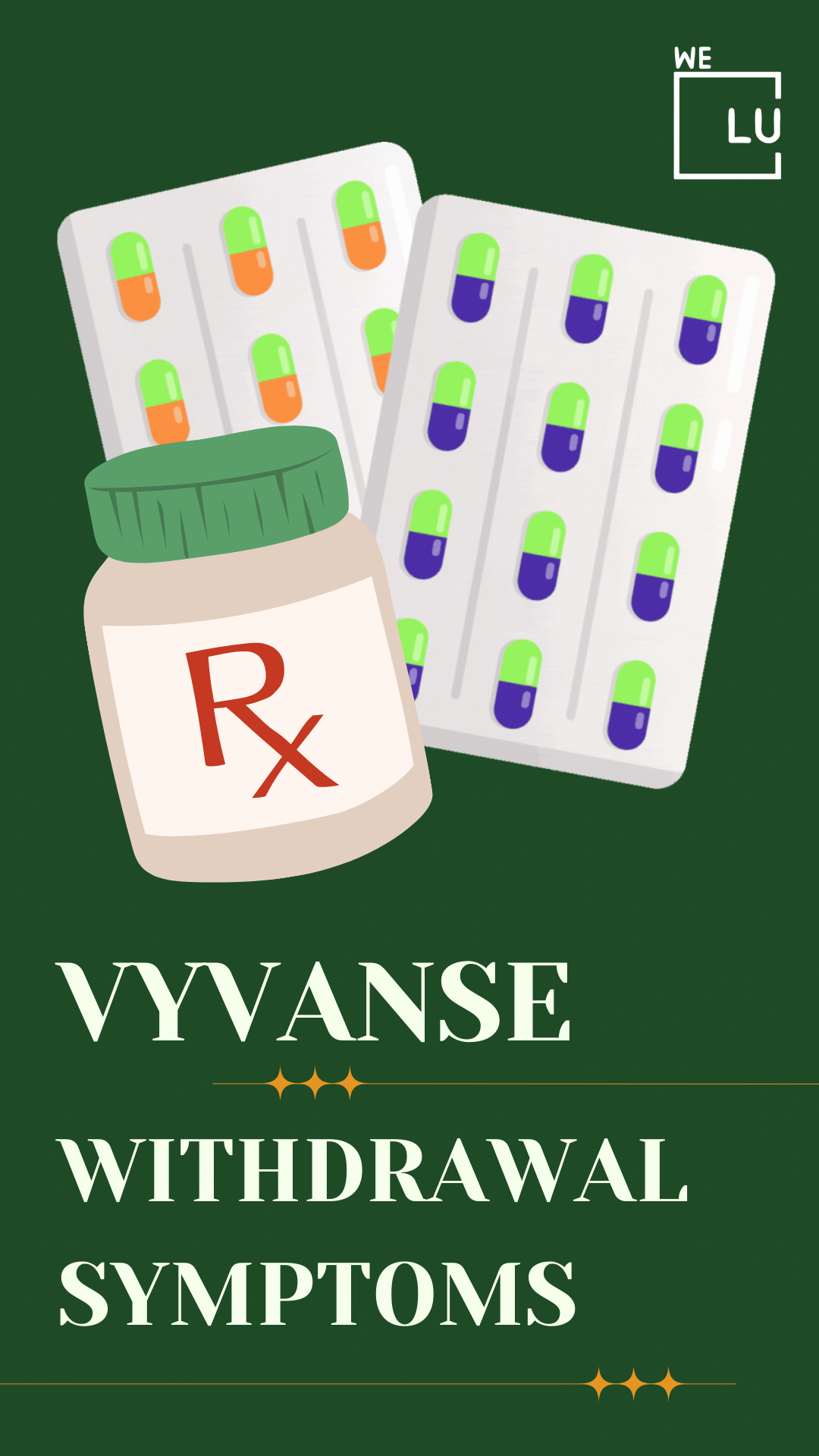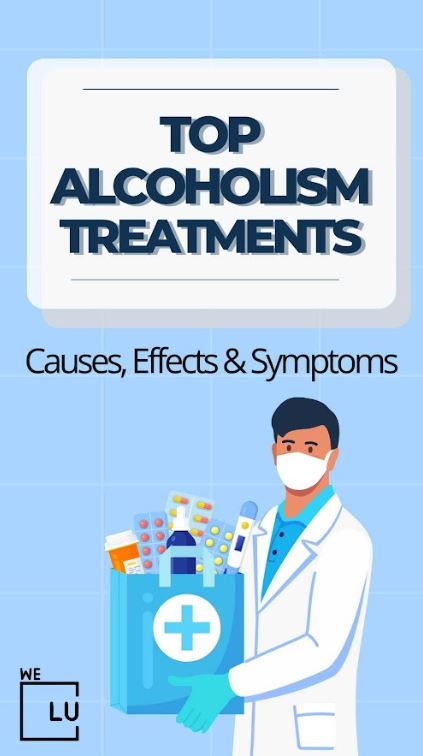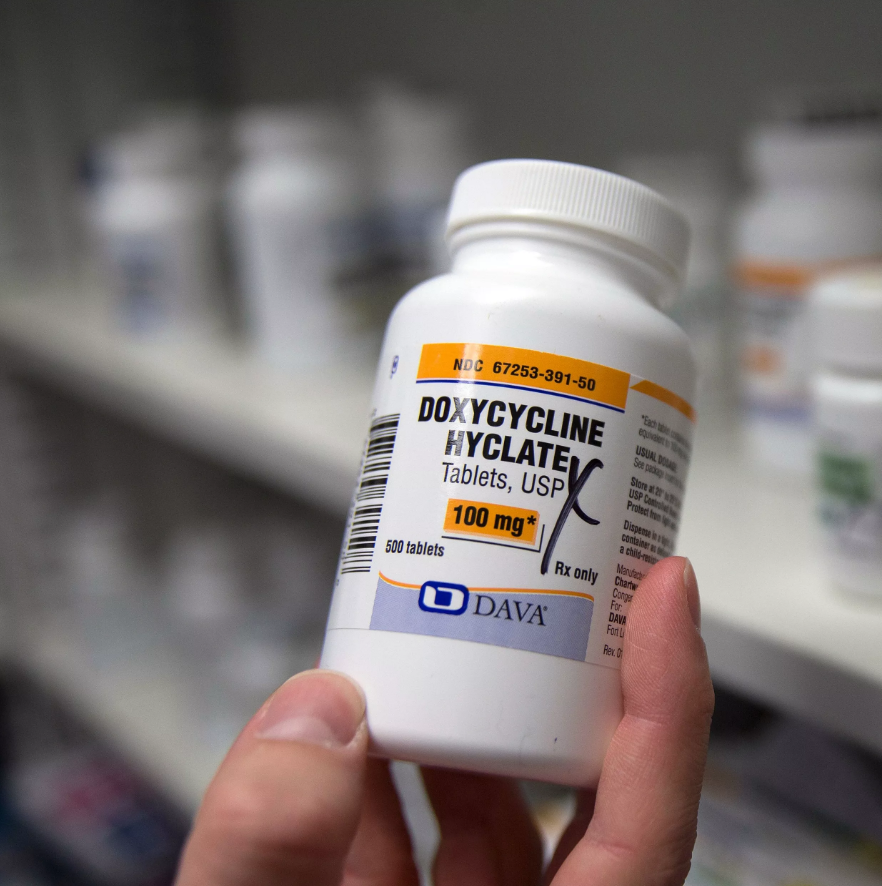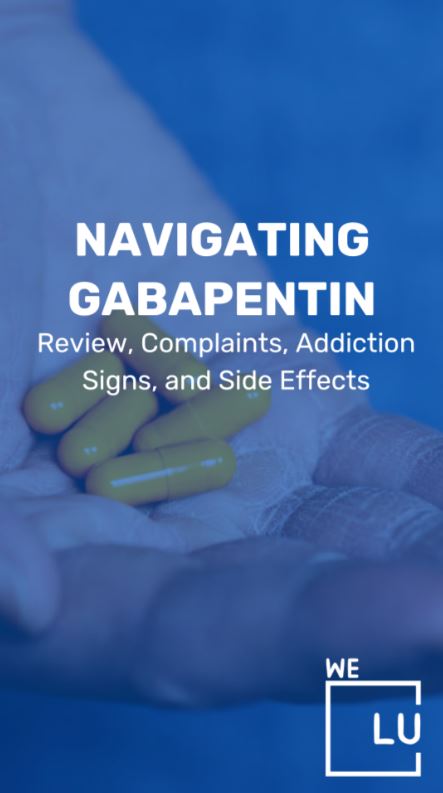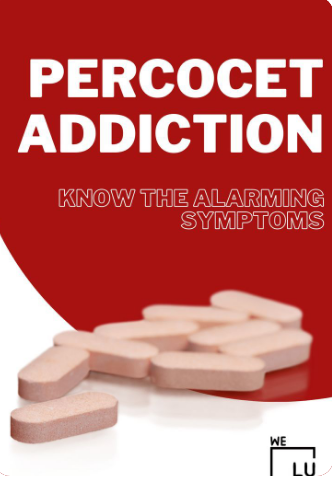Is Tramadol a Narcotic?
Yes. Tramadol is in a class of drugs called opiate (narcotic) analgesics. Tramadol (brand name Ultram) is used to relieve moderate to moderately severe pain. Tramadol extended-release tablets and capsules are only used by people who expect to need medication to relieve pain around the clock. It is in a prescription drug class called opioid analgesics. It works by changing how the brain and nervous system respond to pain.
Take this medicine only as directed by your doctor, and do not take it for a longer time than your doctor ordered. You must understand the rules of the Opioid Analgesic REMS program to prevent addiction, abuse, and misuse of acetaminophen and codeine combination. Also, alcohol and tramadol interactions combine the dangers of both, resulting in intensified consequences for the user.
Looking for help with opioid abuse challenges like tramadol addiction? Join thousands of patients who trusted We Level Up for tramadol abuse and other addiction treatments. Call 24/7 for more opioid rehab information today. Your call is free and confidential. Access addiction professionals who understand your circumstances and are ready to help.
Is Tramadol a Narcotics Drug Class?
In 2014, tramadol went from being viewed as a narcotic-like drug of concern to a Schedule IV controlled substance by the US Food and Drugs Administration (FDA). Also, the FDA recommends against the use of tramadol in pregnancy. Using tramadol with serotonergic medicines can also increase the risk of serotonin syndrome. Tramadol serotonin syndrome can be a life-threatening emergency and should be managed in an acute care setting.
Is Tramadol a Narcotic or Not?
Tramadol is commonly prescribed to treat neuropathic pain and various disorders characterized by tender, painful, and stiff muscles. The medication is typically used to alleviate the pain that ranges from moderate to moderately severe, as well as experienced following a surgical procedure.
Tramadol has proved beneficial for those suffering ongoing (chronic) pain. This drug effectively works with the body’s central nervous system (CNS) to relieve pain. Used for long-term treatment, this drug has been noted as potentially addictive, resulting in mental and physical dependence. Physical dependency can lead to various tramadol side effects, especially when discontinued.
Tramadol Opioid Medication
Is Tramadol an Opioid?
Tramadol is indeed an opioid, though its exact mechanism of action is slightly different than other opioids. In short, it acts on the brain to change how the body feels and responds to pain. In addition to attaching to opioid pain receptors, tramadol inhibits the uptake of two neurotransmitters, serotonin-norepinephrine, which may add to its pain-relieving effects. However, the exact mechanism by which it does this isn’t entirely clear.
Individuals with a history of addiction and drug-seeking behavior may be at an increased risk of opioid use disorder. Also, people without substance abuse may resort to doctor shopping or other illicit means to obtain tramadol.
Persons who regularly use tramadol should not abruptly stop taking tramadol, as withdrawal symptoms can occur. If you have a prescription, consult with your doctor before discontinuing tramadol treatment, and do not discontinue treatment on your own.
Opioid Analgesic REMS for Tramadol
Is Tramadol an Opioid Analgesic?
The opioid analgesic Risk Evaluation and Mitigation Strategy (REMS) for tramadol involves a comprehensive plan to ensure this medication’s safety and appropriate use. It includes educational programs for healthcare providers and patients about the risks and benefits of opioid analgesics like tramadol.
The REMS program aims to mitigate the potential for misuse, abuse, addiction, overdose, and other adverse effects associated with opioid medications while still ensuring that patients who require these medications for pain management have access to them.
Tramadol Side Effects
Tramadol oral tablet may cause drowsiness. It will help if you only drive, use heavy machinery, or perform dangerous activities once you know how this drug affects you. Tramadol may also cause other side effects.
More Common Tramadol Side Effects
- Dizziness.
- Headache.
- Drowsiness.
- Nausea and vomiting.
- Constipation.
- Lack of energy.
- Sweating.
- Dry mouth.
- Itching.
If these tramadol side effects are mild, they may go away within a few days or weeks. Talk to your doctor or pharmacist if they’re more severe or don’t go away.
Serious Tramadol Side Effects
Serious Tramadol side effects and their symptoms can include the following:
Tramadol Serotonin Syndrome
Tramadol Serotonin Syndrome Symptoms
- Fast heart rate.
- High blood pressure.
- Body temperature that’s higher than average.
- Reflexes that are stronger than usual.
- Lack of coordination (control of your movements).
- Nausea and vomiting.
- Diarrhea.
- Agitation.
- Hallucinations (seeing or hearing things that aren’t real).
- Coma.
Serious Breathing Problems
Tramadol and Breathing Side Effects
- Slowed breathing rate.
- Very shallow breathing (little chest movement with breathing).
- Fainting, dizziness, or confusion.
Physical Dependence and Withdrawal When Stopping the Drug
Tramadol Dependence
- Feeling irritable, anxious, or restless.
- Trouble sleeping.
- Increased blood pressure.
- Fast breathing rate.
- Fast heart rate.
- Dilated (large) pupils.
- Teary eyes.
- Runny nose.
- Yawning.
- Nausea, vomiting, and a loss of appetite.
- Diarrhea and stomach cramps.
- Sweating.
- Chills.
- Muscle aches, back pain, or joint pain.
- Seizures.
- Addiction or misuse of this drug.
Adrenal Insufficiency
Tramadol Induced Adrenal Insufficiency
- Long-lasting tiredness.
- Muscle weakness.
- Pain in your abdomen.
Call your doctor right away if you have serious side effects.
Call 911 if your symptoms feel life-threatening or if you think you have a medical emergency.
White Round Pill No Imprint Tramadol & Other Types
Below is a dosage chart providing information about tramadol dosage ranges, imprints, color, shape, and tablet versus capsule classification.
| Imprint Code | Description |
|---|---|
| 627 | White, Capsule-shaped |
| AN627 | White, Capsule-shaped, with “AN627” |
| 319 | White, Oval-shaped |
| ULTRAM | White, Round |
| 377 | White, Oblong |
| M T7 | White, Round, with “M T7” |
| 58 93 | White, Round, with “58 93” |
| APO 083 | White, Round, with “APO 083” |
| 101 | White, Elliptical/Oval |
| PAR 821 | White, Capsule-shaped, with “PAR 821” |
Tramadol Warnings
Tramadol comes with several vital warnings for its use. These include:
- Addiction, Abuse, and Misuse: Tramadol has the potential for addiction, abuse, and misuse, leading to overdose and even death. It should be taken only as prescribed by a healthcare professional.
- Respiratory Depression: Tramadol can cause slowed or difficult breathing, particularly when taken in higher doses or combined with other substances that depress the central nervous system.
- Serotonin Syndrome: Taking tramadol with certain other medications can lead to a potentially life-threatening condition called serotonin syndrome, characterized by symptoms like agitation, hallucinations, rapid heartbeat, fever, muscle stiffness, and more.
- Seizures: Tramadol may lower the seizure threshold, particularly in those with a history of seizures or certain medical conditions.
- Interaction with Other Medications: Tramadol can interact with various drugs, such as certain antidepressants or MAO inhibitors, leading to potentially severe reactions.
- Withdrawal: Abruptly stopping tramadol can lead to withdrawal symptoms, including anxiety, sweating, nausea, tremors, and more.
- Risk of Overdose and Death: Overdose on tramadol can be fatal, particularly when combined with alcohol or other drugs.
- Risks in Specific Populations: Tramadol’s use is cautioned in certain populations, including pregnant and breastfeeding individuals, children, and the elderly.
- Hypersensitivity Reactions: Some individuals may experience hypersensitivity reactions to tramadol, including skin rash, itching, or swelling.
It’s crucial to follow a healthcare provider’s guidance when taking tramadol and to be aware of these warnings to ensure the safe and effective use of the medication.
Drug Interactions With Tramadol
It’s crucial to inform your healthcare provider about all your medications, supplements, and substances to ensure safe tramadol use and prevent potential interactions.
- Serotonergic Medications: Combining tramadol with other medications that affect serotonin levels, such as certain antidepressants, can increase the risk of serotonin syndrome.
- Central Nervous System Depressants: Using tramadol with other substances that have a soothing effect, like alcohol, sedatives, or tranquilizers, can lead to excessive drowsiness and respiratory depression.
- Monoamine Oxidase Inhibitors (MAOIs): Taking tramadol with MAOIs can lead to severe and potentially life-threatening reactions.
- Antipsychotics: Some antipsychotic medications may interact with tramadol, increasing the risk of seizures.
- Quinidine: Quinidine can interfere with the metabolism of tramadol, potentially leading to increased tramadol levels and its associated side effects.
- Certain Antidepressants: Tramadol’s metabolism can be affected by certain antidepressants, leading to altered levels in the body.
- Warfarin: Tramadol can interact with warfarin, an anticoagulant, potentially affecting its effectiveness.
- CYP2D6 Inhibitors and Inducers: Tramadol’s metabolism is influenced by enzymes in the liver, so medications that inhibit or induce these enzymes can affect tramadol’s effects.
- CNS Stimulants: Combining tramadol with stimulant medications can increase the risk of seizures.
- Other Opioids: Using tramadol concurrently with other opioids can increase the risk of side effects and overdose.
Tramadol Overdose
If you suspect someone has overdosed on tramadol, seek emergency medical attention immediately. Overdose can be life-threatening and requires prompt medical intervention.
Potential symptoms and effects of a tramadol overdose:
- Slow or Shallow Breathing: Breathing may become slowed or difficult, potentially leading to respiratory distress.
- Extreme Drowsiness: Overdose can cause severe drowsiness or even loss of consciousness.
- Constricted Pupils: Pupils may become very small due to central nervous system depression.
- Cold or Clammy Skin: Skin may feel cold and clammy.
- Weakness or Limpness: Muscular weakness or limpness in the body can occur.
- Low Blood Pressure: Blood pressure may drop, leading to dizziness or fainting.
- Slow Heart Rate: The heart rate can become unusually slow, known as bradycardia.
- Unresponsiveness: Overdose can lead to unresponsiveness or an inability to be aroused.
- Seizures: Seizures are a possible outcome of a tramadol overdose.
- Coma: In severe cases, an overdose can lead to a coma or unconsciousness.
Tramadol Withdrawal Symptoms
Long-term use can lead to withdrawal symptoms if a person suddenly stops taking tramadol. The sign usually begins 6-12 hours after the last dose and lasts about 5-7 days. Detox centers and rehab programs can treat withdrawal symptoms and manage medical complications.
Tramadol withdrawal produces flu-like symptoms, which are typical of opioid withdrawal.
Common effects people may experience include the following:
- Nausea and vomiting.
- Diarrhea.
- Sweating.
- Anxiety, nervousness, and panic.
- Sleep problems.
- Cold chills (rigors).
- Uncontrollable shaking (tremors).
- Muscle, joint, and bone pain.
- Runny nose.
- Sneezing.
- Coughing.
- Hair standing on end.
Withdrawal symptoms can pose mental and physical health risks. In some cases, these effects may be life-threatening. Some potential dangers of tramadol withdrawal include the following:
- Severe depression and anxiety.
- Suicidal thoughts and behavior.
- Psychosis.
- Paranoia.
Is Tramadol a Narcotic Now?
Is tramadol a non-narcotic? Tramadol is an opioid. It is classified as an opioid medication due to its interaction with opioid receptors in the central nervous system. Read the details below for an overview of comparisons between tramadol and other opioids.
| Aspect | Tramadol | Other Opioids |
|---|---|---|
| Classification | Synthetic opioid | Various natural opioids |
| Mechanism of Action | Binds to opioid receptors | Binds to opioid receptors |
| Strength | Moderately potent | Varies widely |
| Pain Relief | Moderate to severe pain | Moderate to severe pain |
| FDA Schedule | Schedule IV (US) | Varies (Schedule II, III, IV) |
| Risk of Dependence | Moderate | High |
| Potential for Abuse | Moderate | High |
| Prescription Requirement | Generally required | Generally required |
| Respiratory Depression | Less likely | More likely |
| Side Effects | Nausea, dizziness, etc. | Similar side effects |
| Withdrawal Symptoms | Possible withdrawal | Common withdrawal |
| Combination Risk | Some interactions | Interaction concerns |
Tramadol Is it a Narcotic Controlled Substance?
Tramadol is a controlled substance in all 50 states. This medication is structurally similar to other opioid drugs, such as morphine and codeine, and can lead to dependence, tolerance, substance use disorder, and withdrawal.
Tramadol misuse is indeed prevalent, frequently involving individuals who were never initially prescribed the medication or those who escalated their intake to counteract increasing tolerance levels. This pattern of conduct can result in severe consequences, particularly when compared to the misuse of other opioids. Notably, this specific drug can potentially induce a severe withdrawal syndrome in certain individuals, rendering it potentially more hazardous than its counterparts within the same drug category.
Signs and Symptoms of Tramadol Abuse
According to the US Department of Health and Human Services, tramadol and other opioids like it “bind to receptors in your brain and body,” causing relaxation, confusion, and a decreased perception of pain. A person on large drug doses will often seem intoxicated and euphoric.
Other signs and symptoms of tramadol abuse include the following:
- Sleepiness.
- Insomnia.
- Headache.
- Nervousness.
- Anxiety.
- Itching.
- Tightness of the muscles.
- Constipation.
- Heartburn or indigestion.
- Nausea.
- Vomiting.
- Dry mouth.
- Mood swings.
A person who gets high on the drug often may swing back and forth between happy or excited moods and depression or anxiety. Because the drug causes such intense symptoms when taken in large doses, it is usually easy to tell if someone you know has been abusing it.
Someone can take a hefty dose of tramadol once without becoming immediately addicted, but other significant dangers are associated with abusing this particular opioid. One should be very careful not to misuse their tramadol medication––or anyone else’s––under any circumstances.
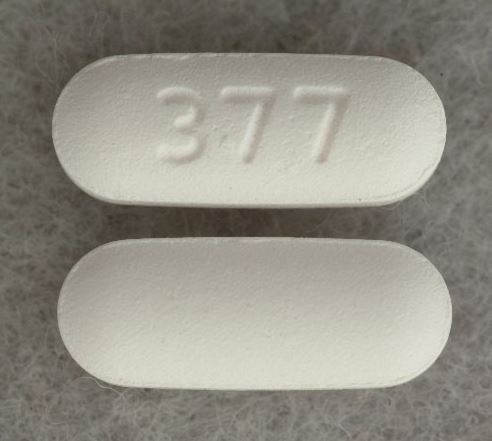
Is Tramadol Addictive?
Yes, tramadol is addictive due to its impact on the brain’s reward system and the body’s physiological responses. When taken, tramadol binds to opioid receptors in the brain, releasing neurotransmitters like dopamine that create pleasurable sensations.
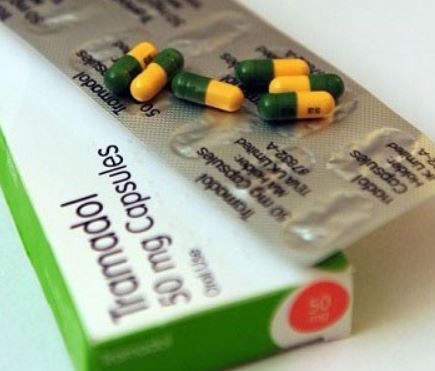
Skip To:
Learn More:
- Tramadol Withdrawal Symptoms, Timeline & Treatment
- Can You Snort Tramadol? Risks & Effects of Snorting Tramadol
- Mixing Tramadol and Alcohol Side Effects, Risks & Overdose Dangers
- Tramadol Serotonin Syndrome
- Tramadol in Pregnancy
- Tramadol Interactions
- Tramadol Detox
- Pain Medication List Strongest to Weakest, Risks & Effects
- Effective Opioid Addiction Treatment Options, Signs, Symptoms, Risks & Help
- Opiate Detox, Withdrawal, Symptoms, & Timeline
With repeated use, the brain adapts to this influx of dopamine, leading to tolerance, where higher doses are needed to achieve the same effects. Moreover, abrupt cessation of tramadol can trigger withdrawal symptoms, reinforcing the desire to continue using the drug to avoid these unpleasant effects. This cycle of tolerance, reward, and withdrawal contributes to the addictive nature of tramadol.
Get addiction counseling that works. Discover professional help from We Level Up NJ’s addiction and mental health therapists. Start getting support with a free call to our addiction hotline.
New Jersey We Level Up Narcotic Drug Treatment Center
Overcoming tramadol addiction can be challenging and lonely. Many individuals struggle to quit independently and often relapse to relieve their symptoms or satisfy their cravings. However, with We Level Up New Jersey’s therapy and a robust medical support system, you can experience a more manageable withdrawal and successful recovery. If you require assistance with rehab, don’t hesitate to contact a treatment advocate 24/7.
Get Help. Get Better. Get Your Life Back.
Searching for Accredited Drug & Alcohol Rehab Centers Near You? Or Mental Health Support?
Even if you have failed previously, relapsed, or are in a difficult crisis, we stand ready to support you. Our trusted behavioral health specialists will not give up on you. Call us when you feel ready or want someone to speak to about therapy alternatives to change your life. Even if we cannot assist you, we will lead you wherever you can get support. There is no obligation. Call our hotline today.
FREE Addiction Hotline – Call 24/7Tramadol Dosage
Tramadol dosage comes as a tablet, a solution (liquid), an extended-release (long-acting) tablet, and an extended-release (long-acting) capsule to take by mouth. The regular tablet and solution are taken with or without food every 4 to 6 hours as needed. The extended-release tablet and extended-release capsule should be taken once a day. Take the extended-release tablet and the pill at about the same time daily.
If you are taking the extended-release pill or capsule, you may take it with or without meals. If you take extended-release medicine, you should always take it with or without food. Take tramadol exactly as directed. Do not take more medication as a single or daily dose than your doctor prescribes. Taking more tramadol than your doctor prescribes or in a way that is not recommended may cause severe side effects or death.
What are Narcotics?
Also known as “opioids,” the term “narcotic” comes from the Greek word for “stupor” and originally referred to a variety of substances that dulled the senses and relieved pain.
Though some still refer to all drugs as “narcotics,” today “narcotic” refers to opium, opium derivatives, and their semi-synthetic substitutes.
A more current term for these drugs, with less uncertainty regarding its meaning, is “opioid.” Examples include illicit heroin and pharmaceutical drugs like OxyContin, Vicodin, codeine, morphine, methadone, and fentanyl.
Tramadol Drug Class Fact Sheet
Is Tramadol Considered a Narcotic?
Is tramadol a non narcotic? Tramadol is considered a narcotic because it falls under the category of opioids, which interact with specific receptors in the brain and body to relieve pain and induce analgesic effects.
Tramadol’s classification as an opioid is based on its mechanism of action, which involves binding to opioid receptors in the central nervous system. This interaction leads to alterations in pain perception, similar to other narcotics in the opioid class.
Does Tramadol Show Up on a Drug Test?
Yes, tramadol can appear on a drug test, particularly those designed to detect opioids. Tramadol is a synthetic opioid medication, and standard drug tests that screen for opioids may identify its presence in the body.
It’s essential to disclose any prescription medications, including tramadol, to the testing facility to ensure accurate interpretation of the results.
What Schedule Drug is Tramadol?
Tramadol is classified as a Schedule IV controlled substance. This means it is recognized as having a lower potential for abuse than Schedule I-III drugs but still carries a risk of physical and psychological dependence.
Tramadol Drug Tests
Tramadol can be detected in various drug tests, including:
- Urine Test: Tramadol can be seen in urine for 2-4 days after the last dose.
- Blood Test: Tramadol is usually detectable in blood for about 24-48 hours after ingestion.
- Saliva Test: Tramadol can be detected in saliva for 1-4 days after use.
- Hair Test: Tramadol can be seen in hair follicles for a more extended period, often up to 90 days or more after use.
The detection window can vary based on factors such as dosage, individual metabolism, and frequency of use.

Get Your Life Back
Find Hope & Recovery. Get Safe Comfortable Detox, Addiction Rehab & Mental Health Dual Diagnosis High-Quality Care at the We Level Up Treatment Centers Network.
Hotline (877) 378-4154Tramadol Abuse Statistics
Tramadol-related emergency department visits have been reported, often due to misuse, adverse effects, and overdose incidents. Factors contributing to tramadol abuse include a history of substance abuse, mental health conditions, and drug availability.
70,000
In recent years, opioid overdose deaths have been a significant public health concern in the US. The CDC reported over 70,000 drug overdose deaths in 2019, with opioids significantly contributing.
Source: CDC
1.6 Million
In 2019, about 1.6 million people received medication-assisted treatment (MAT) for opioid use disorder.
Source: NIDA
255 Million
The total number of prescription opioid dispensing peaked around 2012, with over 255 million prescriptions dispensed that year. This number has gradually decreased due to efforts to curb excessive opioid prescribing.
Source: SAMHSA
When Can I Breastfeed After Taking Tramadol?
Many healthcare professionals advise against breastfeeding while taking tramadol due to its potential risks to the nursing baby.
If you’ve taken tramadol and are considering breastfeeding, it’s essential to consult with a healthcare professional, such as a doctor or lactation consultant, before making any decisions.
Tramadol can pass into breast milk and affect the nursing baby, potentially causing sedation or other side effects.
The timing for breastfeeding after taking tramadol can depend on various factors, including the dosage, your metabolism, and your baby’s needs. Your healthcare provider will be able to provide you with personalized guidance based on your situation.

First-class Facilities & Amenities
World-class High-Quality Addiction & Mental Health Rehabilitation Treatment
Rehab Centers TourRenowned Addiction Centers. Serene Private Facilities. Inpatient rehab programs vary.
Addiction Helpline (877) 378-4154Proven recovery success experience, backed by a Team w/ History of:
15+
Years of Unified Experience
100s
5-Star Reviews Across Our Centers
10K
Recovery Success Stories Across Our Network
- Low Patient to Therapist Ratio
- Onsite Medical Detox Center
- Comprehensive Dual-Diagnosis Treatment
- Complimentary Family & Alumni Programs
- Coaching, Recovery & Personal Development Events
We Level Up NJ Rehab for Tramadol Addiction Treatment
Narcotic addiction is a severe and complex medical condition that requires comprehensive treatment. It profoundly affects the brain and behavior, leading to compulsive drug-seeking behaviors despite harmful consequences. Effective treatment often involves a combination of behavioral therapies, medication-assisted treatments, and support systems to address the disease’s physical, psychological, and social aspects.
It’s essential to approach the tramadol narcotic dependency and withdrawal journey with patience and understanding, as well as under the guidance of a healthcare professional. We Level Up New Jersey treatment centers can provide tailored advice, support, and potential strategies to manage the challenges that may arise throughout the withdrawal process.
Seeking professional help is crucial, especially if withdrawal symptoms are severe or distressing. Call us today for a free consultation and insurance check. If you require assistance with your rehab journey, contact a We Level Up NJ treatment professional now. Your call is free and confidential.
Get a free rehab insurance check without any obligation. Do you have questions about tramadol addiction or treatment in general? Call our helpline 24/7.
World-class, Accredited, 5-Star Reviewed, Effective Addiction & Mental Health Programs. Complete Behavioral Health Inpatient Rehab, Detox plus Co-occuring Disorders Therapy.
CALL (877) 378-4154End the Addiction Pain. End the Emotional Rollercoaster. Get Your Life Back. Start Drug, Alcohol & Dual Diagnosis Mental Health Treatment Now. Get Free No-obligation Guidance by Substance Abuse Specialists Who Understand Addiction & Mental Health Recovery & Know How to Help.
Top 3 Is Tramadol Opioid? FAQs
-
Is tramadol considered an opioid?
Yes, tramadol is classified as an opioid medication, as it acts on opioid receptors in the brain and spinal cord to provide pain relief. It shares some similarities with other opioids in its mechanism of action and potential for addiction.
-
Is tramadol a synthetic opioid?
Tramadol is categorized as a synthetic opioid because it is chemically synthesized rather than derived from natural sources like opium. It’s designed to mimic the effects of opioids in providing pain relief and interacting with opioid receptors in the nervous system.
-
Does tramadol show up as opioid on urine test?
Yes, tramadol can typically appear as an opioid on urine drug tests because it interacts with opioid receptors in the body. Many standard drug tests are designed to detect opioids, including synthetic ones like tramadol.
How Long Do Opiates Stay in Your System? How Long Do Opiates Stay in Urine, Blood, & Body?
Tramadol contains opiate-like properties similar to codeine. It functions as a pain-relieving medication by interacting with opioid receptors in the brain and spinal cord. This mechanism contributes to its analgesic effects. Tramadol possesses addictive potential due to its impact on opioid receptors in the central nervous system.
Is tramadol narcotics? Yes. If you or a loved one is struggling with narcotic addiction or other substance use disorder(s), call for a FREE consultation 24/7 at (561) 678-0917
Watch the video below to learn how narcotics and certain types of opioids affect your body system and drug tests.
Get FREE addiction treatment insurance check – https://welevelup.com/rehab-insurance/
Experience Transformative Recovery at the We Level Up Treatment Center.
See our authentic success stories. Get inspired. Get the help you deserve.



Start a New Life
Begin with a free call to an addiction & behavioral health treatment advisor. Learn more about our dual-diagnosis programs. The We Level Up treatment center network delivers various recovery programs at each treatment facility. Call to learn more.
- Personalized Care
- Caring Accountable Staff
- World-class Amenities
- Licensed & Accredited
- Renowned w/ 5-Star Reviews
We’ll Call You
Search We Level Up NJ Tramadol Detox. Is Tramadol a Narcotic? Topics & Resources
Sources
[1] Dhesi M, Maldonado KA, Maani CV. Tramadol. [Updated 2023 Apr 16]. In: StatPearls [Internet]. Treasure Island (FL): StatPearls Publishing; 2023 Jan-. Available from: https://www.ncbi.nlm.nih.gov/books/NBK537060/ Is Tramadol a Narcotic? Related Articles and Tramadol Opioid Facts.
[2] Grond S, Sablotzki A. Clinical pharmacology of tramadol. Clin Pharmacokinet. 2004;43(13):879-923. Doi 10.2165/00003088-200443130-00004. PMID: 15509185. Is Tramadol a Narcotic? Related Articles and Tramadol Opioid Facts.
[3] Clinical Guidelines for Withdrawal Management and Treatment of Drug Dependence in Closed Settings. Geneva: World Health Organization; 2009. 4, Withdrawal Management. Available from: https://www.ncbi.nlm.nih.gov/books/NBK310652/
[4] Institute of Medicine (US) Committee on Opportunities in Drug Abuse Research. Pathways of Addiction: Opportunities in Drug Abuse Research. Washington (DC): National Academies Press (US); 1996. B, Drug Abuse Research in Historical Perspective. Available from: https://www.ncbi.nlm.nih.gov/books/NBK232965/ Is Tramadol a Narcotic? Related Articles and Tramadol Opioid Facts.
[5] Opioid Withdrawal – U.S. Department of Health and Human Services National Institutes of Health Available from: https://medlineplus.gov/ency/article/000949.htm
[6] Prescription Opioids Drug Facts – National Institute on Drug Abuse (NIDA) Is Tramadol a Narcotic? Related Articles and Tramadol Opioid Facts.
[7] Understanding the Opioid Overdose Epidemic – Centers for Disease Control and Prevention (CDC)
[8] Schiller EY, Goyal A, Mechanic OJ. Opioid Overdose. [Updated 2022 Sep 19]. In: StatPearls [Internet]. Treasure Island (FL): StatPearls Publishing; 2023 Jan-. Available from: https://www.ncbi.nlm.nih.gov/books/NBK470415/
[9] Narcotics (Opioids) – Drug Enforcement Administration (DEA) Is Tramadol a Narcotic? Related Articles and Tramadol Opioid Facts.
[10] Risk Factors for Opioid Misuse, Addiction, and Overdose – U.S. Department of Labor / Is Tramadol a Narcotic? Related Articles and Tramadol Opioid Facts.
